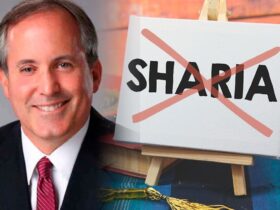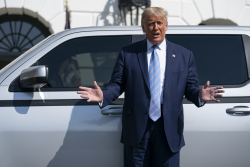Presidents who make big changes in government policy usually lay their plans with care. They game out what might happen next. They sweat the little things. Richard Nixon did not just decide one morning to fly to China. Ronald Reagan’s tax cuts were the better part of a decade in the making. The details of Barack Obama’s expansion of health insurance emerged from countless public debates.
President Trump prefers to shoot before aiming. Declaring that he intends to reboot America’s relations with the rest of the world, he has imposed tariffs on imports with abandon, demonstrating a disregard for the details or the collateral damage. His careless conduct of the public’s business has roiled stock and bond markets, threatened to cause a recession and damaged America’s global standing. The president’s decision-making has been so erratic that at one point this week, the administration’s top trade official was interrupted in the middle of testimony before Congress because the president had just changed the policy the official was defending.
The original version of Mr. Trump’s plan, which he paused on Wednesday, imposed tariffs on foreign nations at rates that bore no apparent connection to America’s national interests. The highest tariff rate, 50 percent, applied to Lesotho, a tiny and impoverished nation in southern Africa.
The latest version isn’t much better. Mr. Trump is imposing a 10 percent tariff on imports from most nations, along with higher rates on imports from America’s three largest trading partners: Canada, Mexico and China. The average tax on imports will rise to the highest level in more than a century, raising the prices on many consumer goods. The 145 percent maximum rate on Chinese imports is intended to isolate that nation economically, but the simultaneous tariffs on everyone else will undermine that goal. And while the stated purpose of all the tariffs is to expand American manufacturing, putting them in place immediately doesn’t give companies time to build factories. It will cause pain without any benefit.
We want to emphasize that Mr. Trump has a point about the pain caused by free trade. The decades in which the United States threw open its doors to imports from other countries left many Americans without jobs and decimated the nation’s industrial heartland. Washington’s naïveté about China’s rise, accomplished partly through its own trade barriers and theft of intellectual property, is particularly regrettable.
A revival of American manufacturing is a worthy goal. It would not heal past wounds, but it could provide a basis for future generations of Americans to build lives and to rebuild communities that are more prosperous and more secure.
That is the tragedy of Mr. Trump’s trade war. Instead of addressing the ills he has diagnosed, he has embarked on a reckless campaign that threatens to discard the benefits of trade without delivering a meaningful economic revival.
From the end of World War II until the beginning of Mr. Trump’s first term in office, American leaders of both political parties sought to expand trade, believing that it would increase the nation’s prosperity and help to maintain peace among nations.
The benefits of their efforts have been substantial. Globalization has lifted billions of people from poverty in Africa, Asia and Latin America. It has also enriched the United States, spurring innovation by increasing both competition and the rewards for success. Wall Street, Hollywood and Silicon Valley have all reaped the benefits of global markets. So have American farmers, weapons makers and pharmaceutical companies. Nine of the world’s 10 most valuable companies today are American, in part because of this country’s openness to trade.
But the benefits accrued disproportionately to the affluent. In theory, the government could have redistributed those benefits more equitably; in practice, it did not. For many Americans, especially those who lost factory jobs, the availability of cheap goods at Walmart was an inadequate recompense. A widely cited academic paper by the economists David Autor, David Dorn and Gordon Hanson estimated that expanded trade with China alone resulted in the loss of 2.4 million American jobs between 1999 and 2011. Many of the communities hit hardest by those job losses still have not recovered. Many former factory workers never returned to work.
Tariffs could be deployed as part of a broader strategy to expand the nation’s manufacturing base and create more inclusive growth. Taxing imports protects domestic manufacturers from foreign competition at the expense of domestic consumers, who must pay higher prices as a consequence. That trade-off is sometimes worth it.
There is a good case for imposing tariffs on carefully defined categories of products, including those that are necessary to maintain the nation’s security. Tariffs can also protect American industry from unfair competition, as when other countries are subsidizing exports. And tariffs can be effective as a shield for emerging industries, like electric vehicle manufacturing. Under President Joe Biden, the United States sought to expand manufacturing of green energy technologies by combining targeted tariffs with funding for research, investment in infrastructure and incentives for consumers. The result was an increase in factory building.
It is a bitter irony that even as Mr. Trump raises tariffs, he is axing federal support for these technologies, which are among the most promising areas of domestic manufacturing. Some companies are already abandoning their building plans.
Mr. Trump’s use of tariffs is indiscriminate. He is imposing tariffs on goods that the United States does not and cannot produce, like manganese from Gabon, which American companies need to make steel. He is imposing tariffs on nations that buy more goods from the United States than they sell to the United States, like Australia, and on nations that have offered to remove all their tariffs on American goods, like Israel. Even after Mr. Trump paused some tariffs under pressure from investors and members of his party, the measures he has imposed have raised the average effective tax rate on imports to the United States to 27 percent, the highest since the early 20th century, according to Ernie Tedeschi, an economist at Yale University.
In addition to raising prices, tariffs are likely to slow economic growth. And another danger looms: There are warning signs that Mr. Trump’s provocations are reducing demand for Treasuries, forcing the government to offer higher interest rates to investors. If that continues, the federal debt will become even harder to repay.
Mr. Trump and his advisers say that the pain caused by tariffs is necessary to revive domestic manufacturing. But factories take years to build, and companies have good reason to doubt that his successors will maintain his policies. Companies have little basis for confidence that Mr. Trump will keep his tariffs in place. The president has made clear, in word and deed, that his commitments are at best negotiable and at worst fickle.
Mr. Trump, of course, could return to the drawing board at any time. But Congress and the nation cannot afford to wait. The president’s behavior makes clear that Congress has ceded too much authority over trade, as it has on so many issues, and it should act to correct his course and to curb his trade powers.
One sensible reform is a bill introduced by Senator Charles Grassley, Republican of Iowa, and Senator Maria Cantwell, Democrat of Washington, under which tariffs would expire if they did not receive congressional approval within 60 days. That would preserve a president’s ability to respond to emergencies while preventing a president from causing emergencies. Moreover, congressional approval would demonstrate the broad political support necessary to give companies the confidence to make long-term investments.
Mr. Trump extols tariffs as a miracle cure for a wide range of economic ailments. He still seems to believe his first-term declaration that “trade wars are good and easy to win.” The truth is that tariffs can help the United States or they can hurt the United States. Unless the president changes course or is forced to do so, these tariffs will hurt — and the pain is going to get worse.












Leave a Reply